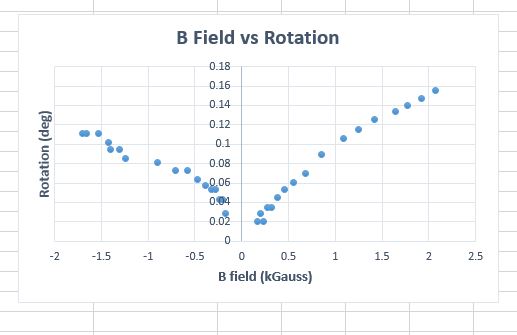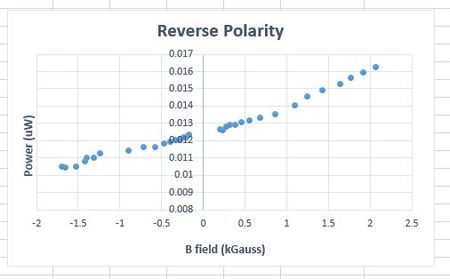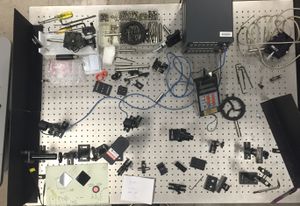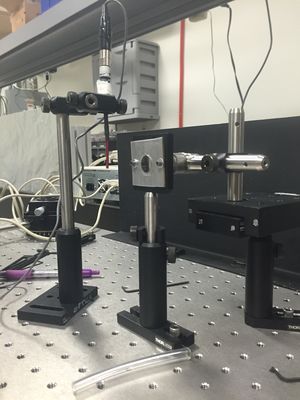Difference between revisions of "Kerr - June 24, 2016"
| Line 13: | Line 13: | ||
I need to find out how to relate the Pick-off values with the overall experiment. How much does laser power change over time? | I need to find out how to relate the Pick-off values with the overall experiment. How much does laser power change over time? | ||
| + | solution; [[Kerr - June 27, 2016]] | ||
Revision as of 09:28, 27 June 2016
The reason we aren't seeing a "V" shape in our Power vs B Field graph is most likely because we are not at the absolute minimum power, or rather the cross polarizers are not completely orthogonal with one another. In one direction of rotation we are allowing the light to be more perpendicularly polarized with the analyzer therefore decreasing the amount of light coming through. In the other direction we move farther away from a perpendicular crossing allowing more light to pass through.
We do however, see an almost exponential increase in power. The increase and decrease of power is a very good sign and indicates a few things: I was skeptical at first of the plate being entirely still since the magnets are so powerful. But as we reverse the polarity the plate is still being pulled on. So as the amount of power increases with one polarity it could be explained that the light amount is increasing from the bending of the plate. However, when the light amount decreases and the plate is still being pulled on although its' increase may be slowed by a bending of the plate it is not hindered and the decrease of light must be explained by something and we have reason to believe that that something is the Kerr effect. The slightly exponential increase of light may be from the bending of the plate by the magnets.
I need to find out how to relate the Pick-off values with the overall experiment. How much does laser power change over time? solution; Kerr - June 27, 2016
Original excel file with this data set:
Media:Pickoffdatagreen1.xlsx
P.S. Monday, I can do the same experiment with a red laser and compare with one of the Kerr papers graphs of wavelength vs rotation amounts.




